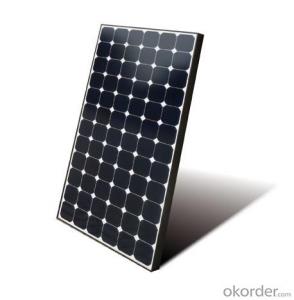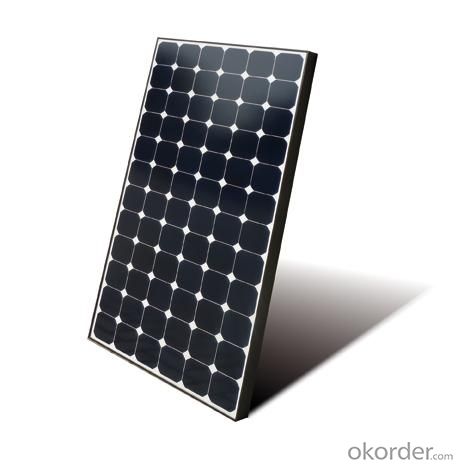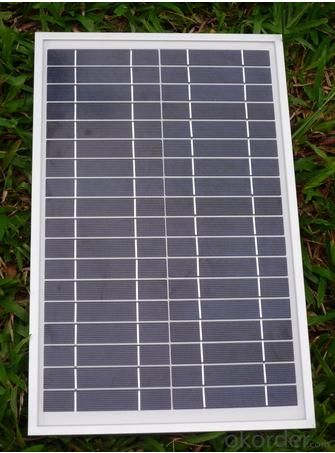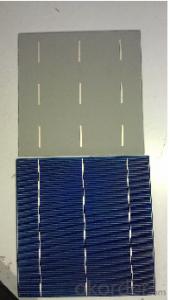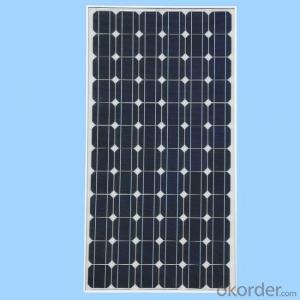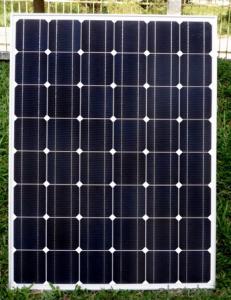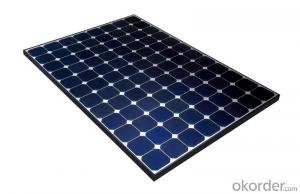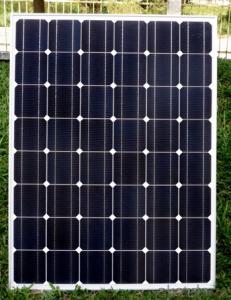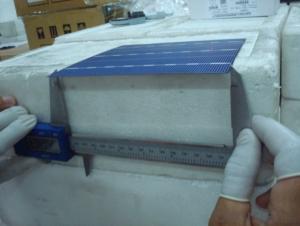Most Efficient Solar Cells:Poly Solar Panel 80W A Grade with 12 Years Warranty
- Loading Port:
- Shanghai
- Payment Terms:
- TT OR LC
- Min Order Qty:
- 100 watt
- Supply Capability:
- 1000 watt/month
OKorder Service Pledge
OKorder Financial Service
You Might Also Like
Specification
Poly Solar Panel 80W A Grade with 12 Years Warranty
Production description
Solar power is the conversion of sunlight into electricity, either directly usingphotovoltaics (PV), or indirectly using concentrated solar power (CSP). Concentrated solar power systems use lenses or mirrors and tracking systems to focus a large area of sunlight into a small beam. Photovoltaics convert light into an electric currentusing the photovoltaic effect.[1]
The International Energy Agency projected in 2014 that under its "high renewables" scenario, by 2050, solar photovoltaics and concentrated solar power would contribute about 16 and 11 percent, respectively, of the worldwide electricity consumption, and solar would be the world's largest source of electricity. Most solar installations would be in China and India.[2]
It may also use a solar tracking system to improve the system's overall performance and include an integrated battery solution, as prices for storage devices are expected to decline. Strictly speaking, a solar arrayonly encompasses the ensemble of solar panels, the visible part of the PV system, and does not include all the other hardware, often summarized as balance of system (BOS). Moreover, PV systems convert light directly into electricity and shouldn't be confused with other technologies, such as concentrated solar power or solar thermal, used for heating and cooling.
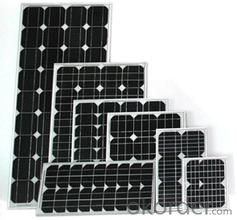
Application
Commercial
Industrial
Residential
Product Feature
12 years quality warranty 25 years performance output.
Free for less than 5 pcs sample requirement
Free to replace or repair or refund if products fail to conform to the PI requirement.
Packaging
28pcs into carton 2carton into pallets 28pallets into a 40ft container
Delivery
After 25 days for manufacturered goods as soon as we received full payment.
After 10 days for stock goods as soon as we received full payment.
- Q: Can solar cells be used in powering electric boats?
- Yes, solar cells can be used to power electric boats. Solar panels can be installed on the boat's surface to capture sunlight and convert it into electricity, which can then be used to power the boat's electric motor and other electrical systems. This enables the boat to operate without relying on traditional fuel sources, making it a more environmentally friendly and sustainable option.
- Q: What is the impact of tree shading on solar cell performance?
- Tree shading has a significant negative impact on solar cell performance as it reduces the amount of sunlight reaching the cells, thereby reducing the overall energy output. Shading blocks direct sunlight and creates uneven distribution of light, resulting in decreased efficiency and potentially even causing parts of the cells to operate in reverse, leading to further energy loss. It is crucial to plan solar installations carefully, considering tree growth and shading patterns, to maximize solar cell performance.
- Q: How do solar cells handle dust storms or sandstorms?
- Solar cells are designed to withstand dust storms or sandstorms by incorporating protective measures. The surface of solar panels is typically made of tempered glass or other durable materials that can resist scratches or damage caused by blowing dust or sand. Additionally, the panels are often tilted or installed at an angle, allowing the wind to blow away any accumulated dust. Regular cleaning and maintenance are also carried out to ensure optimal performance in dusty conditions.
- Q: Can solar cells be damaged by hail or other weather conditions?
- Yes, solar cells can be damaged by hail or other severe weather conditions. Hailstones can cause physical damage to the surface of solar panels, resulting in cracks or fractures that may affect their efficiency. Additionally, extreme weather events such as heavy rain, strong winds, or lightning storms can potentially cause electrical and structural damage to solar cell systems. Hence, it is important to consider the durability and resilience of solar panels when installing them in areas prone to such weather conditions.
- Q: Are solar cells weather-resistant?
- Yes, solar cells are weather-resistant. They are designed to withstand various weather conditions including rain, snow, wind, and extreme temperatures.
- Q: How do solar cells perform in areas with high levels of light pollution?
- Solar cells do not perform as efficiently in areas with high levels of light pollution. The excessive artificial light can interfere with the ability of solar cells to absorb and convert sunlight into electricity. This results in reduced power output and lower overall performance of the solar cells.
- Q: Can solar cells be used in charging electric bikes?
- Yes, solar cells can be used to charge electric bikes. Solar panels are capable of converting sunlight into electricity, which can then be used to charge the batteries of electric bikes. This allows for a sustainable and environmentally friendly way of powering electric bikes.
- Q: Can solar cells be used for powering remote surveillance cameras?
- Yes, solar cells can be used for powering remote surveillance cameras. Solar cells capture sunlight and convert it into electricity, which can then be used to power various devices, including surveillance cameras. This makes solar-powered surveillance cameras a sustainable and cost-effective option for remote locations where access to electrical grids may be limited or non-existent.
- Q: Can solar cells be used for powering remote research stations?
- Yes, solar cells can be used for powering remote research stations. Solar cells, also known as photovoltaic cells, convert sunlight into electricity, making them an ideal and sustainable power source for remote locations. Solar panels can be installed at the research station to capture sunlight and generate electricity, which can then be stored in batteries for use during periods of low sunlight or at night. This enables the research station to operate independently of traditional power grids, reducing reliance on fossil fuels and providing a clean and renewable energy solution.
- Q: Can solar cells be used to power outdoor signage?
- Yes, solar cells can be used to power outdoor signage. Solar cells are designed to convert sunlight into electricity, making them an ideal choice for outdoor applications where access to traditional power sources may be limited. By harnessing solar energy, outdoor signage can operate efficiently and sustainably without relying on the electrical grid.
Send your message to us
Most Efficient Solar Cells:Poly Solar Panel 80W A Grade with 12 Years Warranty
- Loading Port:
- Shanghai
- Payment Terms:
- TT OR LC
- Min Order Qty:
- 100 watt
- Supply Capability:
- 1000 watt/month
OKorder Service Pledge
OKorder Financial Service
Similar products
Hot products
Hot Searches
Related keywords
